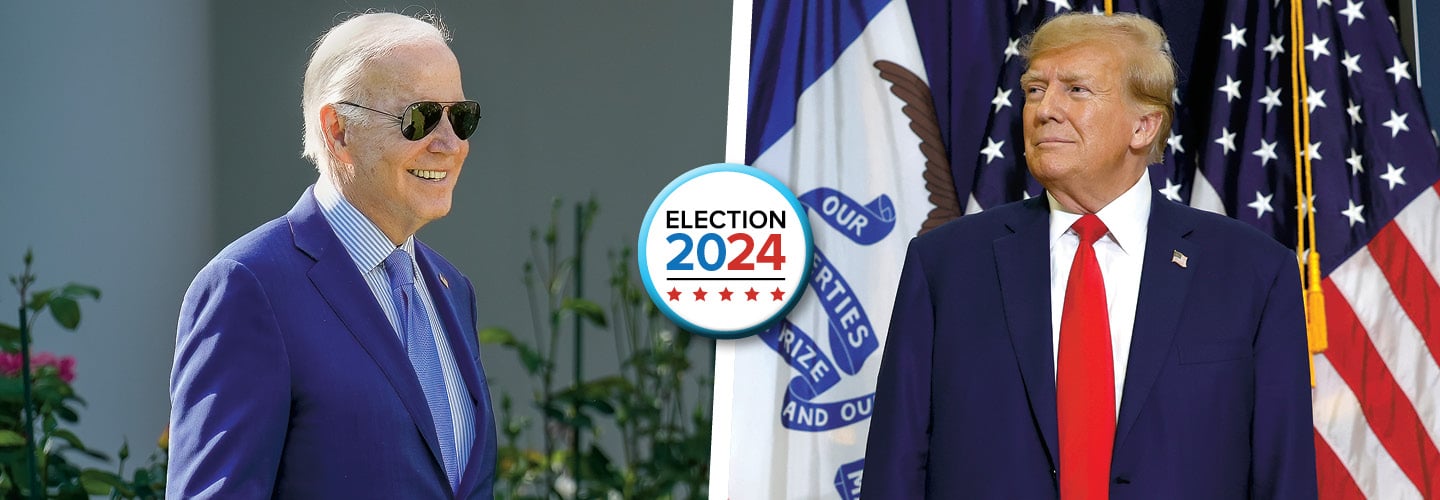Many Americans have been dreading it for months: the possibility that the same two men who fought bitterly for the White House in 2020 would remain their parties’ standard-bearers in 2024.
But President Joe Biden ran largely unopposed in the Democratic primary, and former President Donald Trump very quickly dispatched his rivals on the Republican side, with his last challenger, former South Carolina Governor Nikki Haley, exiting the race in early March. Both Biden and Trump clinched their respective nominations soon after by racking up the necessary primary delegates in early election states.
That sets up the upcoming general election as the first face-off between a president and former president since Theodore Roosevelt took on William Howard Taft in 1912. Add to it the fact that polls show many Americans don’t like either of the two candidates—and that the criminal justice system is playing a large role in the campaign—and you have the makings of a long, wild ride to Election Day on Nov. 5, 2024.
“There is nothing quite like this that we have been through,” says Bob Shrum, a former senior adviser to Democratic candidates. “It’s going to be a campaign unlike any we’ve ever seen.”
Many Americans have been dreading the possibility that the same two men who fought for the White House in 2020 would remain their parties’ candidates in 2024.
President Joe Biden ran largely unopposed in the Democratic primary. Former President Donald Trump very quickly defeated his rivals on the Republican side. His last challenger, former South Carolina Governor Nikki Haley, left the race in early March. Both Biden and Trump clinched nominations by winning the necessary primary delegates in early election states.
The upcoming general election is the first face-off between a president and former president since Theodore Roosevelt ran against William Howard Taft in 1912. Polls show many Americans don’t like either of the two candidates. This could make it a long, wild ride to Election Day on Nov. 5, 2024.
“There is nothing quite like this that we have been through,” says Bob Shrum, a former senior adviser to Democratic candidates. “It’s going to be a campaign unlike any we’ve ever seen.”

